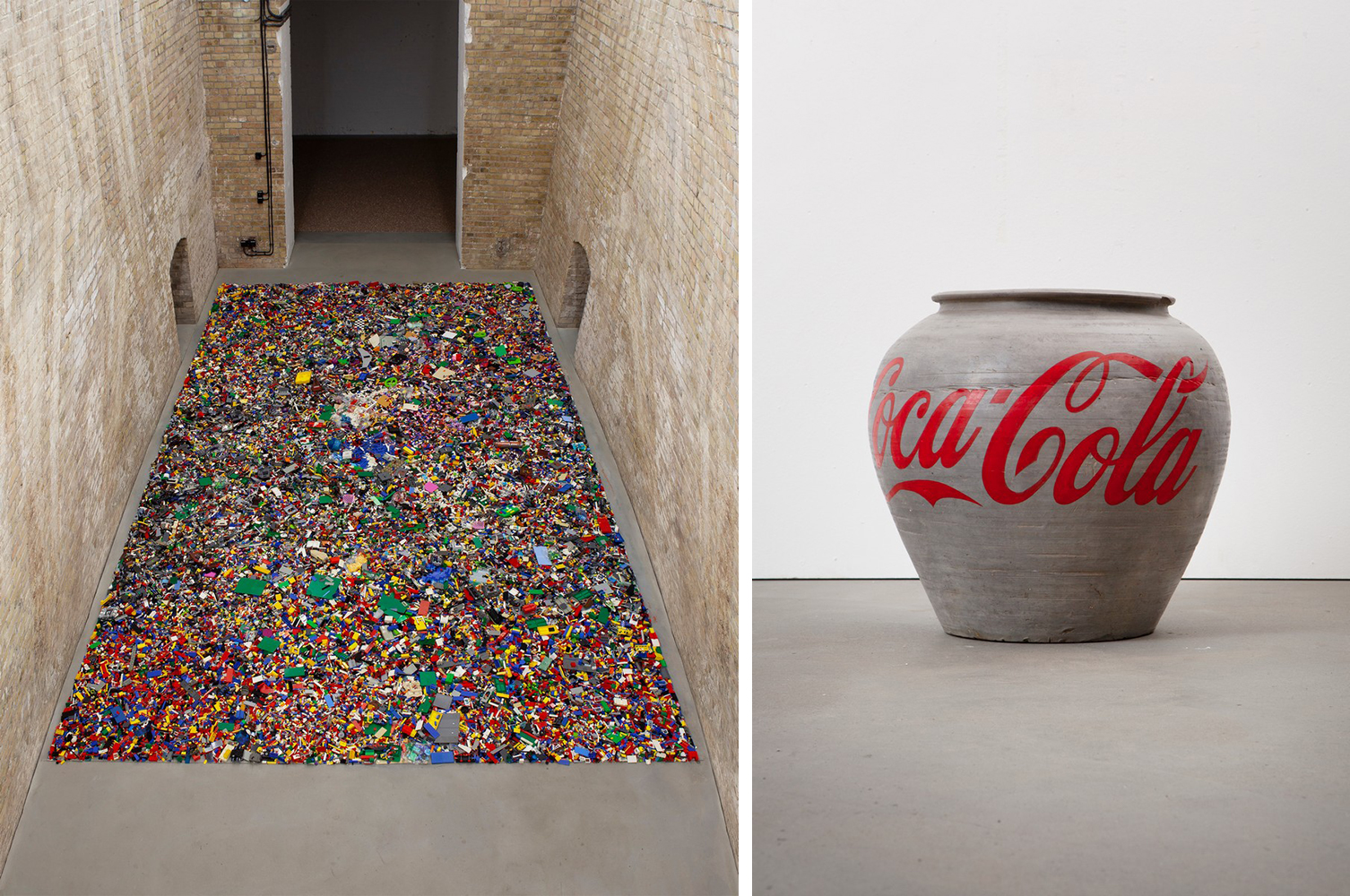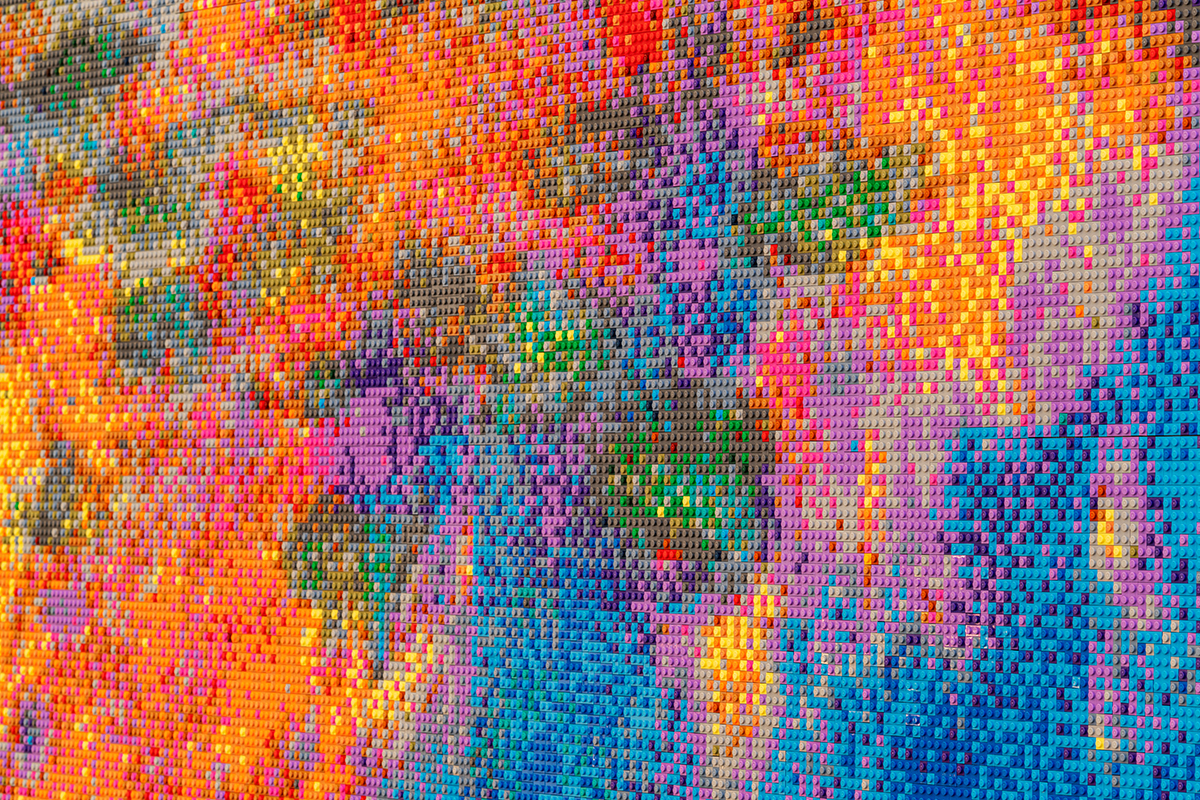ART CITIES: London-Ai Weiwei
 Ai Weiwei has been called the most influential artist of our time. After denouncing government corruption and lack of respect for human rights and freedom of speech in China, he was arrested, beaten, placed in isolation and forbidden to travel. His activity as a dissident has gone hand in hand with his artistic career and he has continued to produce work testifying to his political beliefs while at the same time making plenty of room for creativity and experimentation.
Ai Weiwei has been called the most influential artist of our time. After denouncing government corruption and lack of respect for human rights and freedom of speech in China, he was arrested, beaten, placed in isolation and forbidden to travel. His activity as a dissident has gone hand in hand with his artistic career and he has continued to produce work testifying to his political beliefs while at the same time making plenty of room for creativity and experimentation.
By Dimitris Lempesis
Photo: The Design Museum Archive
Known around the world for his powerful art and activism, Ai Weiwei works across many disciplines: his practice encompasses art, architecture, design, film, collecting and curating. In the exhibition “Making Sense”, Ai uses design and the history of making as a lens through which to consider what we value. At the heart of the exhibition are a series of major site-specific installations. Hundreds of thousands of objects are laid out on the floor of the gallery in a series of five expansive “fields”. These objects — from Stone Age tools to Lego bricks, have been collected together by Ai Weiwei since the 1990s, and are the result of his ongoing fascination with artefacts and traditional craftsmanship. These collection-based works have never been brought together before. Three of the fields have been created for this exhibition and are seen for the very first time. The other two have never been on show in the UK before. The five field works are: Still Life. 4,000 tools dating from the late Stone Age are laid side-by-side as a reminder that the origins of design are rooted in survival. These axe-heads, chisels, knives and spinning wheels are presented as a terrain of forgotten know-how. Left Right Studio Material. This consists of thousands of fragments of the remains of Ai’s porcelain sculptures that were destroyed when his ‘Left Right’ studio in Beijing was demolished by the Chinese state in 2018. The remains are a form of evidence of the repression that Ai has suffered at the hands of the Chinese government, as well as a testament to his ability to turn destruction into art. This field is being displayed for the first time. Spouts. This field features more than 250,000 porcelain spouts from teapots and wine ewers crafted by hand during the Song dynasty (960 – 1279 CE). If a pot was not perfect when it was made, the spout was broken off. The quantity bears witness to the scale of porcelain production in China a thousand years ago. Untitled (Porcelain Balls). These cannon balls were made during the Song dynasty (960 – 1279 CE) from Xing ware, a high-quality porcelain. Ai was struck by the fact that this precious and seemingly delicate material was once used as a weapon of war. Around 200,000 are on display, and the artwork has been created especially for this exhibition. Untitled (Lego Incident). Like other objects in the fields, Lego is produced on an industrial scale, but it is machine-made as opposed to hand-crafted. Ai started working with this material in 2014, to produce portraits of political prisoners. When Lego briefly stopped selling to him as a result, his response on social media led to overwhelming donations of bricks from the public. These donated bricks are presented for the first time as a fully-formed artwork.
Other highlights also include a number of examples of Ai’s ‘ordinary’ objects, where he has transformed something useful into something useless but valuable. He does this by crafting items in precious materials. These include a worker’s hard hat cast in glass which becomes at once strong and fragile, and a sculpture of an iPhone that has been cut out of a jade axe-head. There are also works that reference the Covid-19 pandemic which exposed our dependence on humble things. On display are three toilet paper sculptures: two life-size rolls (one in marble and one in glass) as well as a 2 meter-long sculpture in marble which is being displayed for the first time. These works are all shown in the context of China’s rapidly changing urban landscape, which Ai has documented through photographic and film works, some of which are shown in the exhibition. The scale of demolition during the development boom in China over the last three decades is the backdrop to questions about aesthetic sensibilities that have been lost with modernisation. Revealed for the first time to coincide with the show’s opening are new versions of Ai Weiwei’s famous “Study of Perspective” series, in which he flips the finger at iconic landmarks. Power, as embodied by culturally and politically significant sites, is Ai’s target in the longstanding series. He repeatedly performs a scornful gesture, subverting the traditional artistic method for measuring perspective. In doing so, he rejects the expectation that these institutions should be respected or revered. Begun in 1995 as a series of photographs, these have been turned into pigment prints for this show, using what Ai sees as the more graphic language of design. The twelve here are presented for the first time, and feature Ai showing his middle finger to locations such as Tiananmen Square in Beijing, and Trump Tower in New York City. Another hightlight of the exhibition is the largest Lego artwork Ai Weiwei has ever made. Constructed entirely of Lego blocks, the work is a recreation of one the most famous paintings by French Impressionist Claude Monet. Titled “Water Lilies #1”, the work is over 15m in length and spans the entire length of one of the walls in the Design Museum gallery. It is made from nearly 650,000 studs of Lego bricks, in 22 colors. In the original painting, Monet depicts one of the lily ponds in the gardens of his home in Giverny near Paris. It is an image that has become world-famous for its depiction of nature’s tranquil beauty. However, the pond and gardens were a man-made construct, designed and created by Monet himself at the turn of the 20th century. He had the nearby river Epte partially diverted in order to create this idealised landscape. By recreating this famous scene, Ai Weiwei challenges our ideas of reality and beauty. The new image has been constructed out of Lego bricks to strip away Monet’s brushstrokes in favour of a depersonalised language of industrial parts and colours. These pixel-like blocks suggest contemporary digital technologies which are central to modern life, and in reference to how art is often disseminated in the contemporary world. Challenging viewers further, included on the right-hand side of Ai’s version is a dark portal, which is the door to the underground dugout in Xinjiang province where Ai and his father, Ai Qing, lived in forced exile in the 1960s. Their hellish desert home punctures the watery paradise. A number of large-scale works are also installed outside of the exhibition gallery so that all visitors to the Design Museum are able to experience Ai Weiwei’s work. The most striking is “Coloured House”, the timber frame of a house that once belonged to a prosperous family in Zhejiang province, in eastern China, during the early Qing dynasty (1644 – 1911 CE). It has been installed in the Museum’s atrium where visitors can walk within it. Ai Weiwei has painted the house with industrial colors, combining ancient and modern, and has installed it on crystal bases – giving presence and status to this unlikely survivor. This is the first time “Coloured House” has been seen in the UK.
Photo: Untitled (LEGO Incident). © Image courtesy Ai Weiwei Studio
Info: Curator: Justin McGuirk, The Design Museum, 224-238 Kensington High Street, London, United Kingdom, Duration: 7/4-330/7/2023, Days & Hours: Mon-Fri & Sun 10:00-18:00, Sat 10:00-21:00, https://designmuseum.org/







Right: Ai Weiwei, Han Dynasty Urn with Coca-Cola Logo, 2014. © Image courtesy Ai Weiwei Studio







